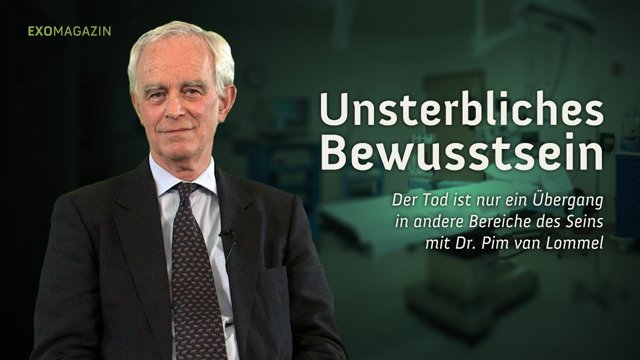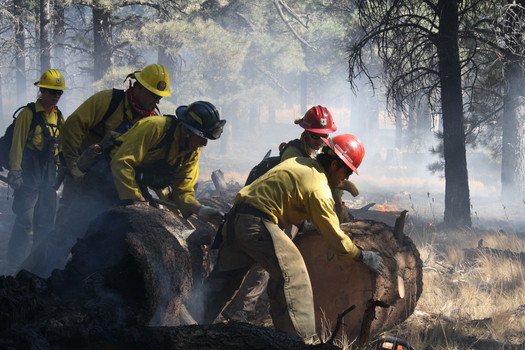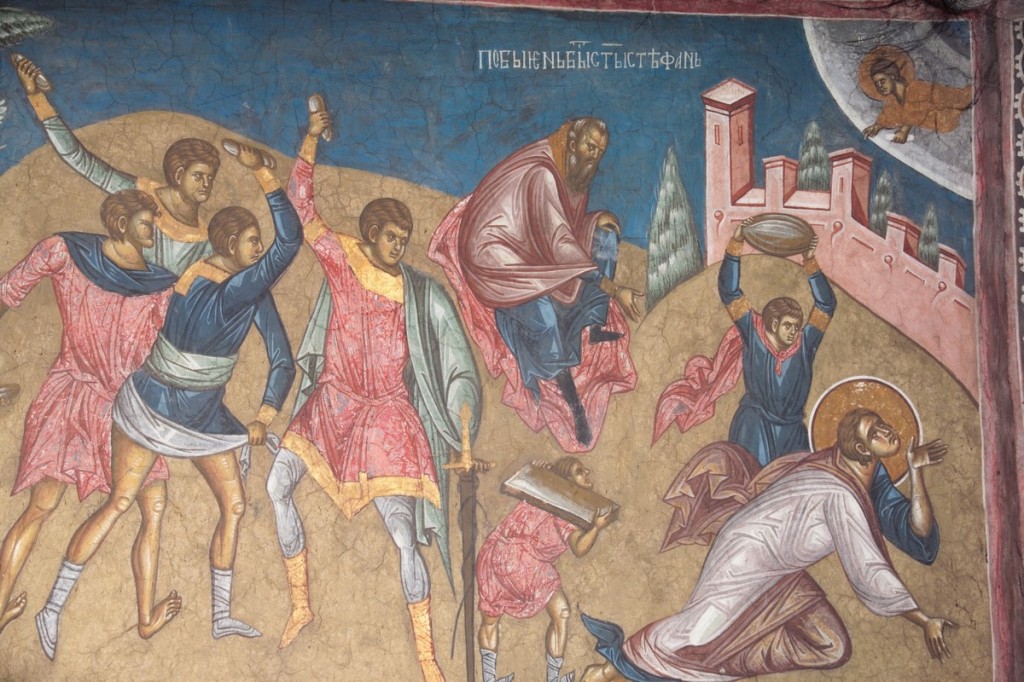Near-Death Experiences Testify of Afterlife
One of the most fascinating phenomena of our time is the near-death experience (NDE). It has baffled science, in general, because it can’t be tested in a laboratory, but has been the icing on the cake for people of religion who appreciate the added back-up to their faith. Because of the sheer number of people who report having NDEs, the scientific community no longer views research into them as “fringe science.”
An explosion of studies over the last few decades by psychologists, neurologists, and theologians, indicate about 5 percent of Americans, (one in 20) have experienced an NDE with similar numbers also found in other countries. That’s 774 NDEs a day. Many have out-of-body experiences where they can describe everything in an emergency room or roadside accident scene right down to procedures done, clothes worn and conversations expressed. Others describe a list of common elements that are nearly indistinguishable from one culture to another, except in how each person interprets his experience. Some of these elements include:
- Traveling through a tunnel moving toward a light.
- Emerging from the tunnel into a world of vivid color and brightness.
- Seeing and being greeted by loved ones.
- Meeting a guide or Deity.
- Observing people being taught in classroom settings.
- Having a life’s review.
- Experiencing telepathic communication and instantaneous travel.
- Feeling total joy and a reluctance to return to mortality.
Researchers show that NDEs happen to people in all walks of life including very young children, the congenitally blind and even atheists. Each person often describes a list of common elements that coincide perfectly with LDS beliefs, such as:
- Two major divisions in the spirit world.
- Gospel taught to spirits in one of these divisions.
- Guardian angels.
- Eternal families.
- Deceased children seen as adults.
- Absence of physical handicaps.

NDEs Are Not Just Hallucinations
How do we account for these experiences? The medical community often explains them away as mere fabrications of the brain (hallucinations) when the body begins to undergo death. And that’s exactly what noted neurosurgeon Dr. Eben Alexander III always staunchly advocated — that is, until he had a near-death experience of his own in 2008.
[pull_quote_left]About 5% of Americans have experienced an NDE.[/pull_quote_left]In his book, Proof of Heaven, he describes being in a coma for seven days with spontaneous E. coli meningitis, a condition considered a 1-in-a-million rarity with an equally rare chance for survival. Alexander’s entire neocortex — the outer surface of the brain, the part that makes us human — was entirely shut down and inoperative, making him a technically near-impeccable conduit for a near-death experience. He details his encounter with an angelic guide who escorted him into the deepest parts of the spirit world where he spoke with what he calls “the divine source of the universe itself.”
His riveting account and tenacious determination to tell the truth about his experience, despite jeopardizing his own career, has made the medical community at least begin to consider explanations beyond the physiological. In addition to fascinating personal accounts like this one, are numerous scientific studies that resolutely debunk the dying brain theory and support NDEs as possible evidence of an afterlife.
One such study took place in the Netherlands in 1988, where 344 survivors of cardiac arrest were studied in Dutch hospitals. The results: 62 patients (18%) had NDEs at varying depths, leaving 282 patients (82%) with no recollection of the cardiac arrest at all. Right off the bat researchers observed that since heart patients can’t have any brain activity whatsoever during a cardiac arrest, when circulation and breathing have ceased, these patients couldn’t possibly have been hallucinating. This dying brain theory was also unable to explain why only some of the patients had NDEs when all experienced essentially the same conditions.
[pull_quote_right]NDEs do not have a physical or medical root.[/pull_quote_right]According to Dr. Pim Van Lommel, the study’s lead architect, “Our most striking finding was that near-death experiences do not have a physical or medical root. After all, 100 percent of the patients suffered a shortage of oxygen, 100 percent were given morphine-like medications, 100 percent were victims of severe stress, so those are plainly not the reasons why 18 percent had near-death experiences and 82 percent didn’t. If they had been triggered by any one of those things, everyone would have had near-death experiences.”

Stories of Near-Death Experiences Give Pause
Example 1: One interesting case was reported in 1995 by K.M. Dale, M.D. The account involved a 9-year-old boy, whose fever went on for nearly 36 hours before it broke in the hospital. As soon as he opened his eyes, at 3 a.m., the boy urgently told his parents, who had been keeping vigil, that he had been to heaven and had seen his deceased grandpa, aunt, and uncle. As startling as that was, the boy went on to say he also saw his 19-year-old sister, a student away at college at the time, who told him he had to go back. Because of the boy’s story, his parents phoned the college where the sister had been attending and were told that she had been killed in a car accident just after midnight. College officials had tried unsuccessfully to reach the family at their home to let them know the tragic news.
Example 2: In another instance, Vicky Umipeg, a 45-year-old woman, blind from birth, described floating above her body in the ER after a car accident. She said she watched as the doctor and nurse worked to repair the damage to her body and explained in detail what she saw. She described being taken up through a tunnel-like structure toward light culminating in a world where she “saw” trees, birds, and flowers, and encountered deceased friends and relatives who were “made of light.” She said, “This was the only time I could ever relate to seeing and to what light was, because I experienced it.”
Example 3: In a rare occurrence, prominent LDS researcher Arvin Gibson, documented the testimony of an entire group of elite Mormon firefighters called the Hotshots, who in 1989, succumbed to the flames only to return with a shared NDE. They all saw each other outside their seemingly lifeless bodies after the forest fire they were fighting engulfed them. They were each promised by a being whom they interpreted to be God, that upon returning to mortality, their bodies would not be burned. When they all revived, remarkably, none were burned, though the mountainside where they had been working was completely destroyed.

NDEs in Scripture and History
References to NDEs are also mentioned in the Bible and Book of Mormon such as Alma the Younger’s NDE where he was “nigh unto death” for three days after an angel rebuked him (Mosiah 27:10-32). Alma’s account has many similarities with the common elements found in other documented NDEs. Other NDEs in scripture include:
- Jesus’ parable about the beggar Lazarus who died and was carried by angels into Paradise (Luke 16:22).
- Stephen who was stoned to death and saw Jesus standing at the right hand of God (Acts 7:55-56).
- Paul who visited the third heaven (2 Cor. 12:1-5).
- King Lamoni who was unconscious for three days until he arose and prophesied many things based on his experience (Alma 18:42-43; 19).
- His wife who had a similar NDE (Alma 19:13-34).

Reports of NDEs date back to the Ice Age with cave paintings in France and Spain that depict scenes reminiscent of these experiences. Plato’s Republic presents an NDE in the story of a Greek soldier killed in battle who just before he was to be cremated, awoke and told a story of leaving his body and traveling with others to a place where they were all to be judged. The occurrence of NDEs in antiquity and in scripture is sizeable and merges neatly with spirit world experiences reported today.
[pull_quote_left]Reports of NDEs date back to the Ice Age.[/pull_quote_left]Modern-day interest in NDEs started in earnest with Raymond Moody, M.D., who wrote his first book on the topic, Life After Life, in 1975. After spending 40 years of his life researching and writing about this intriguing phenomenon, his conclusions about an afterlife hold enormous weight. He acknowledged, “I don’t mind saying that after talking with over a thousand people who have had these experiences, and having experienced many times some of the really baffling and unusual features of these experiences, it has given me great confidence that there is a life after death. As a matter of fact, I must confess to you in all honesty, I have absolutely no doubt, on the basis of what my patients have told me, that they did get a glimpse of the beyond.”


